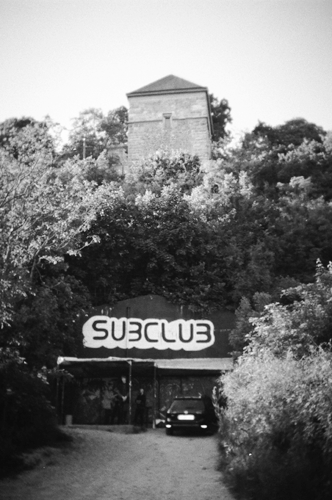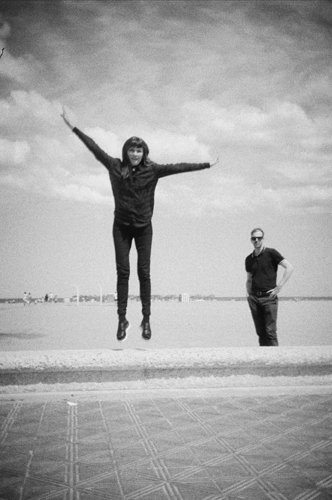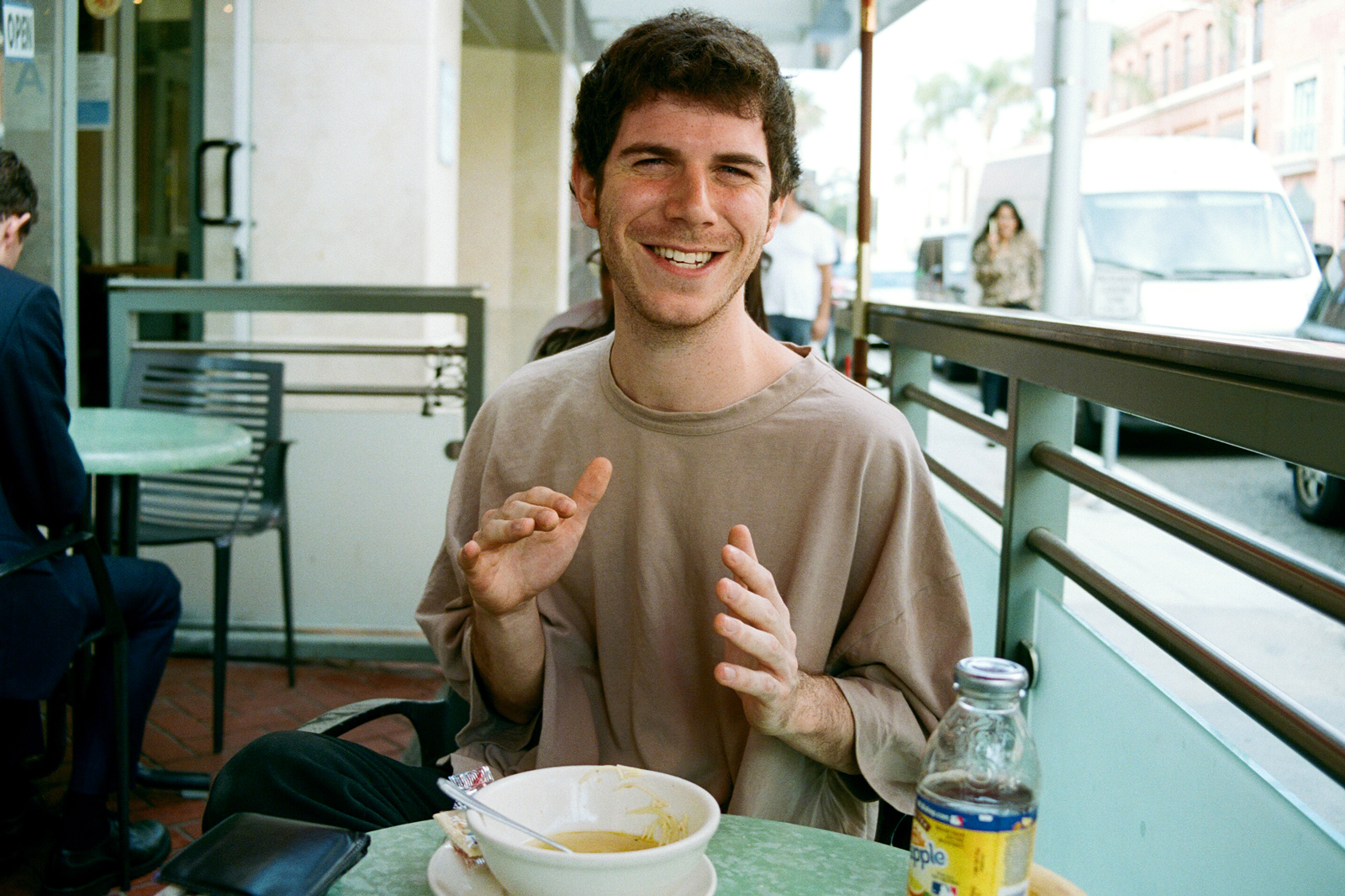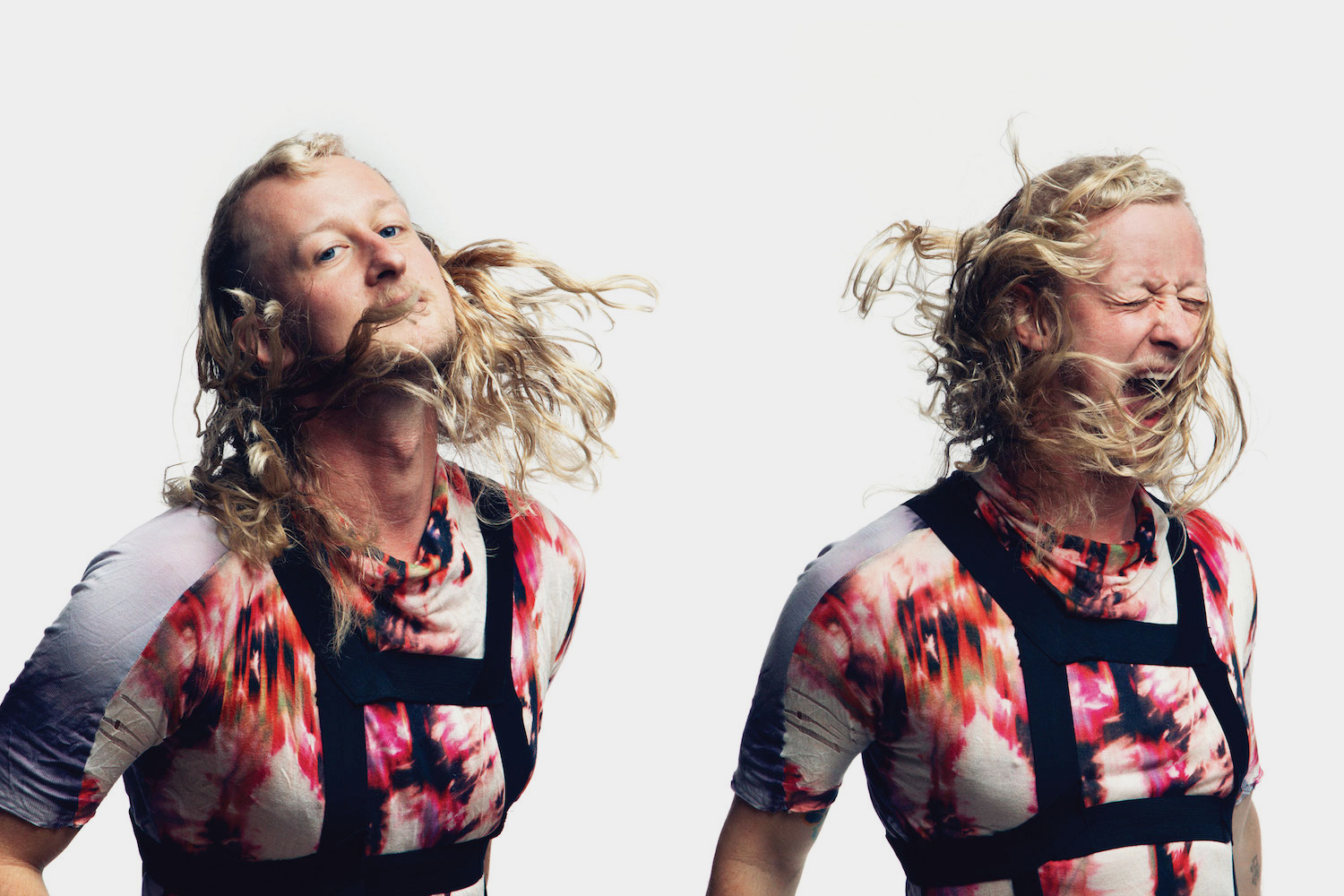Text and Interview: Alec Coiro
Photos: Liz Wendelbo
Many synth style bands engage in a sort fashionable pastiche of the past; they use analogue synthesizer emulators on their computers, which come out of their laptops at their live shows. But Xeno & Oaklander create a pure sound straight from unadulterated source. As artist as well as musicians, the band pays a professional amount of attention to process, and the proof of this is in the listening: songs that are electronic but also alive in an almost tactile way. Although to create a delineation between their art and their music would violate the Xeno & Oaklander philosophy of Gesamtkunstwerk in which all aspects are part of one artistic whole. And don’t be mislead by your notions of buttoned up art-rock live shows either; Liz describes crowd surfing and stage diving. With the latest album, Topiary, the duo expands the sound they have conjured over the years to include meditations on nature. The band told us all about it, everything from their philosophical approach to the nitty gritty of their ebay habits.
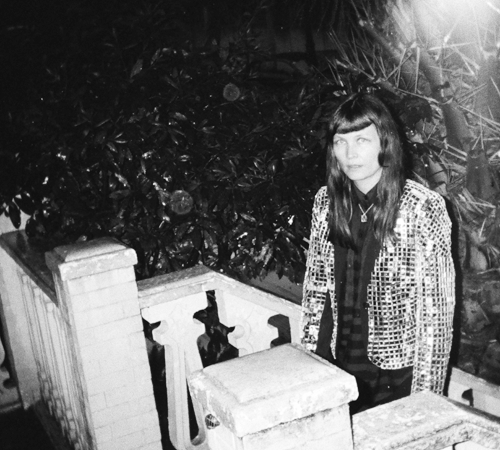
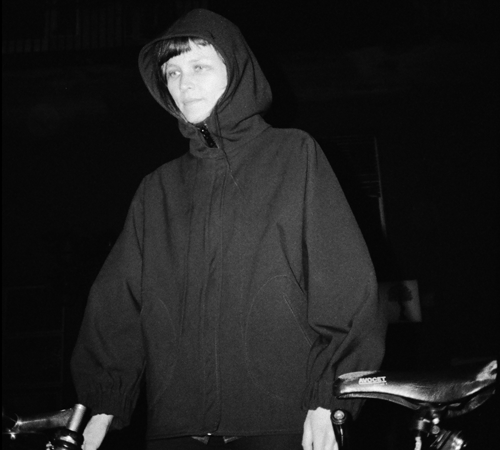
I’ve always wondered where your name came from. Who are Xeno and Oaklander?
LW: Xeno is a pre-Socratic philosopher, Xeno of Elea. Sean and I came across his famous paradox, the Xeno paradox (does an arrow move in space…) in a study book on Metaphysics. Sean collects a lot of books, and this was part of his expansive collection. It has a cool cover, different shades of blue with a geometric pattern. By chance one day we picked the book off the shelf and randomly opened a page: it was the chapter on Xeno’s Paradox. We saw on the cover that one of the editors of the book was called Oaklander, so we thought ok, in a game of associative chance, here we have: Xeno & Oaklander, bound in a book.
Personally, I think analog synthesizers are magical artifacts that resolve the dichotomy of the electronic and the human and contain the contradiction of representing a future being seen from the past. What is that draws you to this sound and the instruments that make it?
LW: Synthesizers are elemental like fire, they shape electricity. A synthesizer gives form to the formless, like a gardener, pruning a wild hedge and turning nature into design. It’s a constant task. Analogue synthesis is like a garden, you build up a song, you shape it, it falls apart and it falls back into place again.
How deep into the labyrinthine world of analog synthesizers do you get? Have you, for example, put together any modular synths? Do you have a deep Ebay presence?
LW: Sean acquired his synth arsenal pretty early on in his career, in the early 2000s. He’d be on eBay constantly, checking on bids, while at art openings, at dinner, he’d wake up in the middle of the night, it was an obsession. The prices were very good then. That’s how the Xeno & Oaklander ‘synth museum’ was built. We also use euro rack modules, which Sean stacks in portable racks – these are new and we just go and get them at our local synth store in Brooklyn, Control.
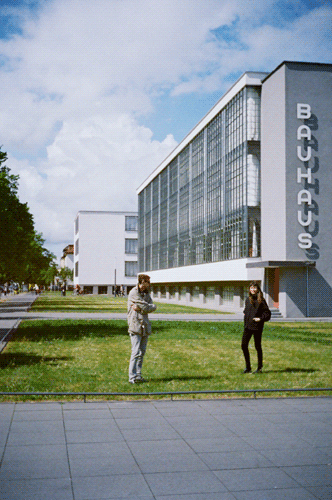
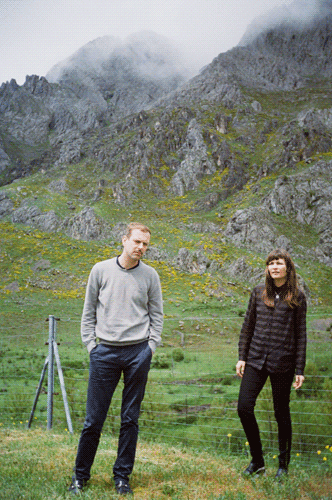
Analogue synthesis is like a garden, you build up a song, you shape it, it falls apart and it falls back into place again.
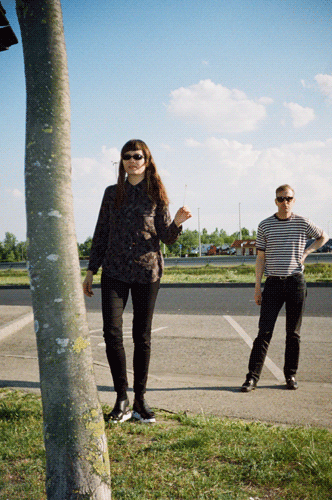
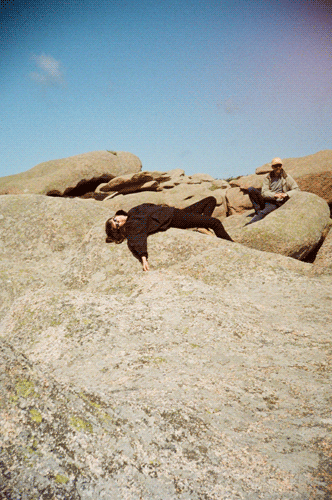
And one last procedural question, do you use synthesizer sequences for your drums or do you use a dedicated drum machine?
LW: For our new album, TOPIARY, we wanted our sound to be unique and tailor-made. So a lot of the sounds were created from the ground up. Sean focused on FM synthesis, and used synth drums, meaning he created the sound of drums from scratch, and created orchestral sounds from scratch too, horns, strings, guitar washes.
How conscious are you of Xeno and Oaklander’s connection to the art world? Do you see the band as an art project or as something separate?
LW: We see Xeno & Oaklander as Gesamtkunstwerk, a total work of art. I design all the artwork for the band, and I’m interested in synesthesia, so all the senses are involved in this project. I create perfumes, shoot films, snap photos and make assemblages and works on paper. I love screen prints and ready-mades, so there is also an element of design to our project. I have collaborated with fashion designers, such as Tess Giberson.
If I’m not mistaken this album was recorded at the Tom Tom Club’s studio in Connecticut. Do I have that right? How did that come to pass?
LW: Indeed, we recorded and mixed TOPIARY at The Clubhouse. It’s a fantastic studio located in the middle of the woods in Connecticut. Chris and Tina of the band Tom Tom Club and Talking Heads were going on a visit to France, and suggested we use their studio for the new record. They’ve been very supportive of Xeno & Oaklander. The studio was amazing to work in, very close to nature, which is reflected in the album: it is about nature and synthesis.
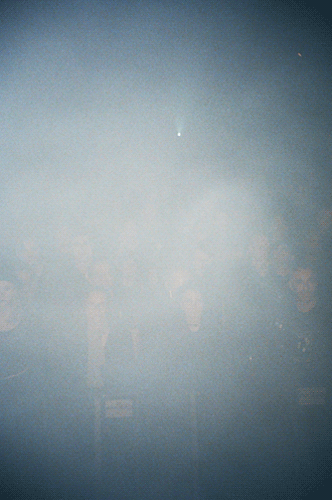
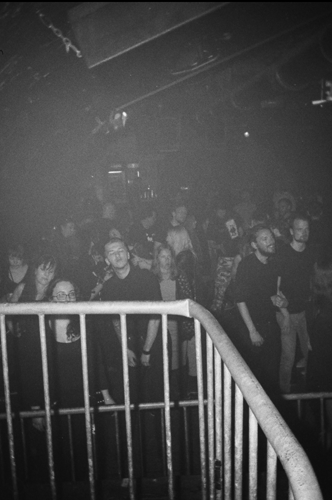
I’m impressed by the attention paid to the lyrics. It’s not often you see such care given to that aspect. Do you create the lyrics to reflect of the mood of the song, does it work the other way around, or is it something completely different?
LW: There was symbiosis when the lyrics were written, in that everything took place in one space – the Clubhouse studio. We would wake up in the morning, compose a track from scratch, find a structure, and then sleep on it. The next day I would wake up and flip through a book of lyrics I was writing as we were composing, edit the words to fit the rhythm of the song, and record the vocals, in the same room. The tracks were mixed there as well. We were really immersed in the process of the album.
What are your live performances like and when and where will we have a chance to see one?
LW: Xeno & Oaklander shows are pretty wild at times, people in the audience have been known to crowd surf and stage dive, I guess maybe because the tempo can be quite fast and we don’t break between songs, it’s a constant pulse of electricity. We play at GOODROOM in Greenpoint Brooklyn on July 1st and that show is going to be crazy. There’ll be shows in NY here and there all summer, and in LA and Montreal in August. We have our own DIY network of venues and promoters that we’ve built up over the years. We have our own community.
You shared your last European tour with Ravelin. Will you be going back for this album?
LW: We’ve just done a tour of Europe ahead of TOPIARY’s release and it was amazing. We like being self sufficient, and love to roam Europe within a circle of synth fans and friends. On this tour we were captivated by the European landscape, its texture and architecture. We drove 9300km which is… 5800 miles. It’s addictive. We’re going back out in the fall.
